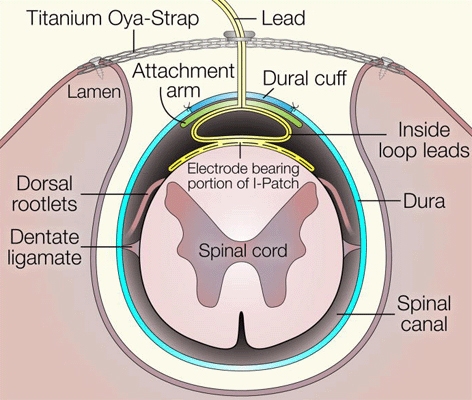Each year, more than 35,000 patients in the US are implanted with spinal cord stimulators to treat chronic pain, with up to half of recipients receiving very limited relief.
The new device, developed by scientists at the University of Virginia and University of Iowa Hospitals and Clinics, aims to reach nerve fibres deep within the spinal cord.
Standard devices, first introduced in 1967, work by delivering a low electrical current to the spinal cord that interferes with the body’s pain signals.
Such devices, however, are only able to deliver therapeutic current to a thin layer of nerve fibres along the outside of the spinal cord because the electrodes delivering the current are placed within the cerebrospinal fluid, which is itself conductive and dissipates some of the current.
The new device, called the Human Spinal Cord Modulation System (HSCMS), is designed to be in direct contact with the spinal cord, held in place by a small loop of wire.
Because the spinal cord moves during normal patient activity, that loop has to exert enough pressure for the HSCMS to stay in contact with the spinal cord but not so much that the pressure restricts blood flow or causes direct injury.
To test the pressure exerted by the HSCMS’s design, researchers attached the device to a silicone model of the spinal cord previously developed to have the same biomechanical characteristics as living tissue.
They then slowly compressed the loop, measuring the pressure exerted on the silicone model.
The results, which were accepted for publication in the American Institute of Physics Journal of Applied Physics, show the device’s loop design exerts pressure at a similar level as is normally found on the spinal cords of healthy people, and so passes an important safety test for further development of the device.
The article, Dynamic loading characteristics of an intradural spinal cord stimulator, can be found here.






Nanogenerator consumes CO2 to generate electricity
Whoopee, they've solved how to keep a light on but not a lot else.